May 31, 2025 | 15:00 GMT +7
May 31, 2025 | 15:00 GMT +7
Hotline: 0913.378.918
May 31, 2025 | 15:00 GMT +7
Hotline: 0913.378.918
At COP26, Vietnam declared to achieve net-zero emissions by 2050 with the support of the international community. To realize this commitment, the government issued the “National Green Growth Strategy for the 2021-2030 period, with a vision to 2050.”
To green the economy, the strategy sets a target to reduce greenhouse gas emission intensity per GDP by at least 15% by 2030 compared to 2014, and by at least 30% by 2050.
Achieving this ambitious goal requires strong determination from the entire political system, with a key focus on the collaboration and efforts of the Vietnamese business community.
However, the report "Readiness and Challenges of Businesses in the Green Transition," recently published by the Research Board for Private Economic Development (IV Board, under the Advisory Council for Administrative Procedure Reform of the Prime Minister), revealed that most Vietnamese businesses are still unprepared and have not fully recognized the necessity of the "green transition."
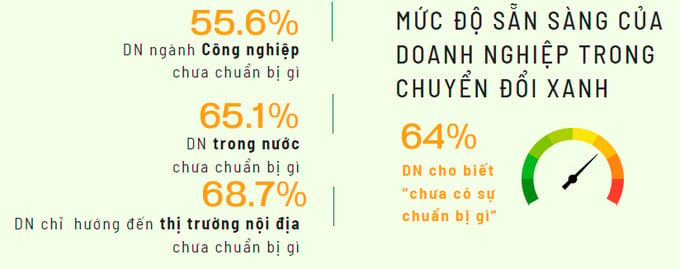
More than 65% of Vietnamese businesses have not prepared anything for the green transition race. Photo: Ban IV.
The green transition is becoming "a race" on a global scale
According to experts from the IV Board, the green transition has become a "global race." Major nations are dedicating significant resources and establishing legal and practical frameworks to drive green transformation within their countries and influence others.
For Vietnam, it is crucial to engage with a determination and effort that matches the strong commitments made by the Government and Prime Minister at COP26 and COP27. This is important not only to showcase the country’s leadership but also to effectively leverage international resources in the context of the green transition.
The green transition now involves a comprehensive system of policies, not just isolated initiatives. It spans investment, trade, economic development, promotion of green innovation, and practical emissions reduction efforts.
Therefore, Vietnam needs to design and implement a national green transition strategy that is holistic. This strategy must be government-led and involve tight coordination among ministries, sectors, localities, and the collaboration of the public, private sector, and citizens. Clear responsibilities, timelines, targets, measures, and methods to monitor and evaluate progress must be outlined to ensure effective implementation and oversight.
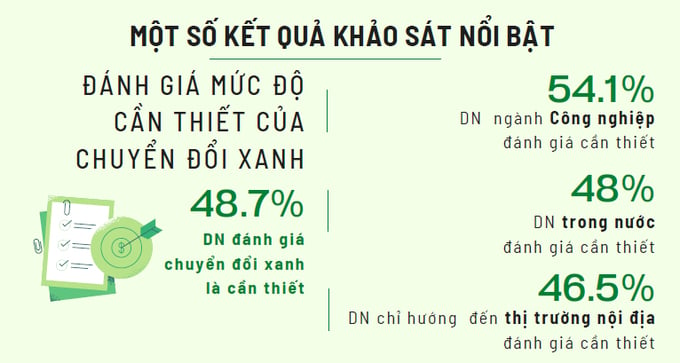
The report also emphasizes that Vietnam's major markets are increasingly enforcing their Net-Zero commitments. As a result, many new policies have been or are expected to be issued, focusing on creating technical barriers related to green development, sustainability, and greenhouse gas emissions reduction.
However, the reality is less encouraging when it comes to the readiness of Vietnamese businesses. Over 50% of businesses surveyed do not consider the green transition truly necessary, and 64% have not yet prepared for it.
Therefore, Ban IV recommends that Vietnam accelerate capacity-building programs and policies to support businesses in adapting to this new playing field, with a focus on key areas: Green finance, Skilled technical workforce, Carbon credit market, and Technology and energy transition.
The proportion of enterprises in the agriculture, forestry, and fisheries sectors that value green transition is the highest compared to other sectors
According to the survey results, 48.7% of businesses assessed that emission reduction and green transition are necessary/very necessary, with 16.9% considering it very necessary.
However, 17.4% still rated it as unnecessary/very unnecessary, and 33.9% evaluated the need for green transition at a moderate level.
Notably, the study results show that businesses in the agriculture, forestry, fisheries, and industrial sectors rated the necessity of green transition higher than those in the construction and service sectors.
Specifically, up to 59.6% of businesses in the agriculture, forestry, and fisheries sectors assessed that emission reduction and green transition are necessary, with 24.9% considering it very necessary. This rate for industrial sector businesses is 54.1%.
Meanwhile, the construction and service sector businesses rated it around 45%. Certain specific industries also recognized the need for the green transition, with textile manufacturing businesses at 55.9%, processing and manufacturing industries at 52.6%, mining businesses at 56.5%, and transportation and warehousing businesses at 48.8%.
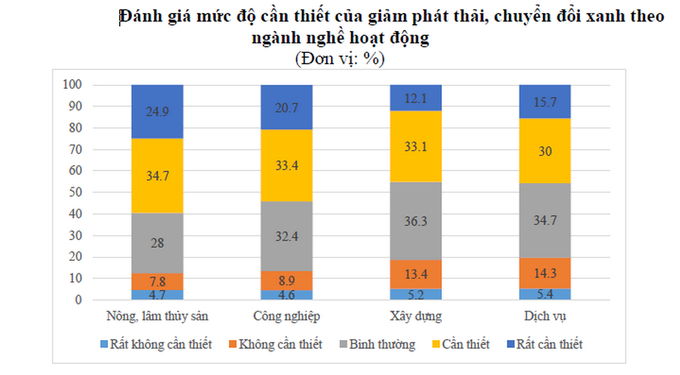
Businesses in the agriculture, forestry, and fishery sectors are more interested in the green transition. Source: Ban IV.
Overall, foreign direct investment (FDI) enterprises rated the necessity of emission reduction and green transition slightly higher than domestic enterprises (55.2% compared to 48%). Businesses with larger revenues also tended to assess the necessity of these changes more highly.
As mentioned, regarding the readiness of businesses for emission reduction and green transition activities, 64% of the surveyed enterprises indicated that they "have not prepared anything."
In terms of activities aimed at "reducing emissions in key operations," only 5.5% of the surveyed businesses reported that they had "already implemented" such measures, while the percentage of businesses "that have monitored and published their annual emission reduction results" was very low, at only 3.8%.
Another noteworthy point is that domestically focused enterprises exhibited lower readiness levels compared to those oriented towards export. While 68.7% of enterprises operating solely domestically have not prepared for emission reduction and green transition, this figure is 53.7% for enterprises operating internationally and 55.6% for those with both domestic and international operations.
In light of this situation, Ms. Pham Thi Ngoc Thuy, Director of the IV Office, stated: “Given the policy developments from major markets such as Europe and the U.S., along with the internalization of these regulations in Vietnam, the fact that businesses seem unprepared will create significant pressure in the future when the transition periods expire and compliance becomes mandatory.”
Access to capital is the biggest challenge for businesses
The feedback from surveyed businesses indicates that they face numerous challenges in the green transition, including issues related to information, access to capital, and qualified personnel.
Among these, the three biggest challenges for businesses are: Access to capital for implementing emission reductions and transitioning to green practices; qualified personnel with expertise in emission reduction and green transition, and specific technical solutions that are suitable for their operations.
Currently, access to capital is the most significant challenge businesses encounter in their efforts to reduce emissions and transition to green practices. Specifically, over 50% of the surveyed businesses reported difficulties related to funding, while only 5.9% indicated they faced no challenges regarding capital.
According to Ban IV, this issue requires special attention, as businesses are in dire need of funds to seize opportunities related to emission reductions and the green transition. However, green finance has not developed accordingly. After more than ten years of implementation in Vietnam, the scale of green finance remains small, with green credit accounting for only 4.5% of total outstanding loans as of the end of 2023, and very few green bonds are available.
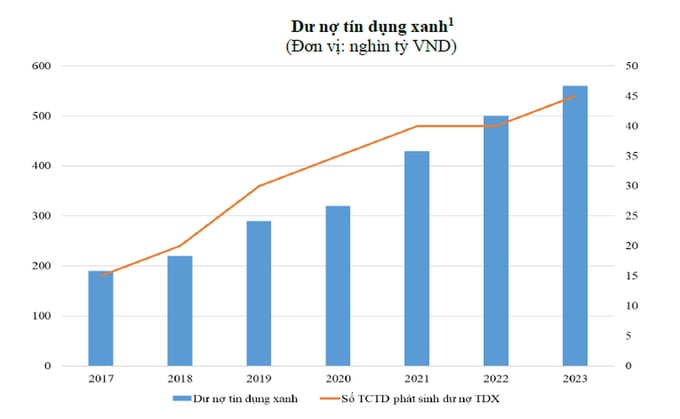
Source: State Bank of Vietnam (2023).
Statistics show that as of the end of 2023, only 47 credit institutions have reported green credit outstanding, amounting to nearly 621 trillion VND, an increase of 24% compared to the same period in 2022, accounting for about 4.5% of the total outstanding loans in the economy. Among these, green credit is primarily concentrated in the renewable and clean energy sectors (nearly 45%) and green agriculture (nearly 30%).
On the other hand, the implementation of green credit still faces many challenges, such as the lack of a legal framework and comprehensive policies, while the loan capital from credit institutions is often short- to medium-term, and borrowers expect preferential interest rates. Regarding green bonds, there is a lack of detailed guidance from relevant authorities (information and criteria for green projects), management and monitoring mechanisms for the use of funds, and a legal framework.
Notably, concerning green bonds, as of the end of 2023, the value of outstanding green bonds in Vietnam only accounted for 1% of the total size of the corporate bond market, according to statistics from AsianBondsOnline.
Translated by: Mai Quang Huy
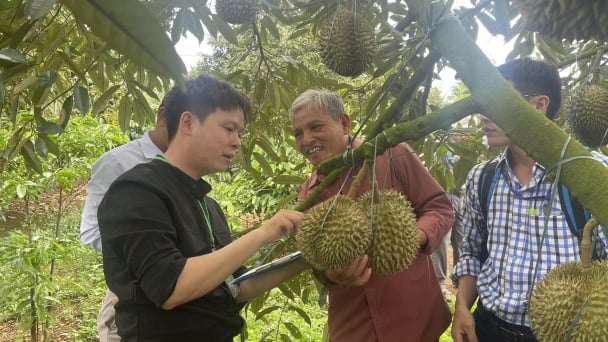
(VAN) For the durian industry to succeed, the value chain must fulfill its commitments to the government, the community, and international partners.
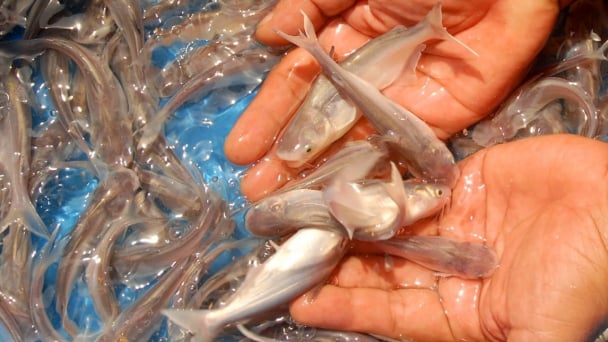
(VAN) Vaccinating juvenile pangasius helps reduce disease, antibiotic use, and farming costs, increasing profits for export-oriented farmers in An Giang.

(VAN) Due to a limited supply of workforce and competitive recruitment requirements, businesses struggle to retain talented veterinary human resources.

(VAN) WOAH’s guidance aims to mitigate disease risks through a One Health approach that balances economic, conservation, and public health interests.

(VAN) Ms. Nguyen Thi Dung, Deputy Director of Ngoc Hoang Cooperative, shared about the journey of bringing dragon fruit to Europe, achieving annual revenues in the billions of VND.
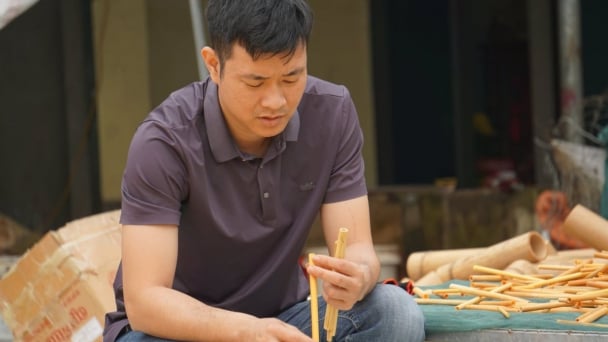
(VAN) Bamboo products from Thang Tho Bamboo Cooperative have reached many countries around the world, while also creating jobs for local workers.

(VAN) The Management Board of Con Dao National Park reported that a green sea turtle, tagged in the Philippines, has traveled thousands of kilometers to lay 84 eggs on Bay Canh Islet.